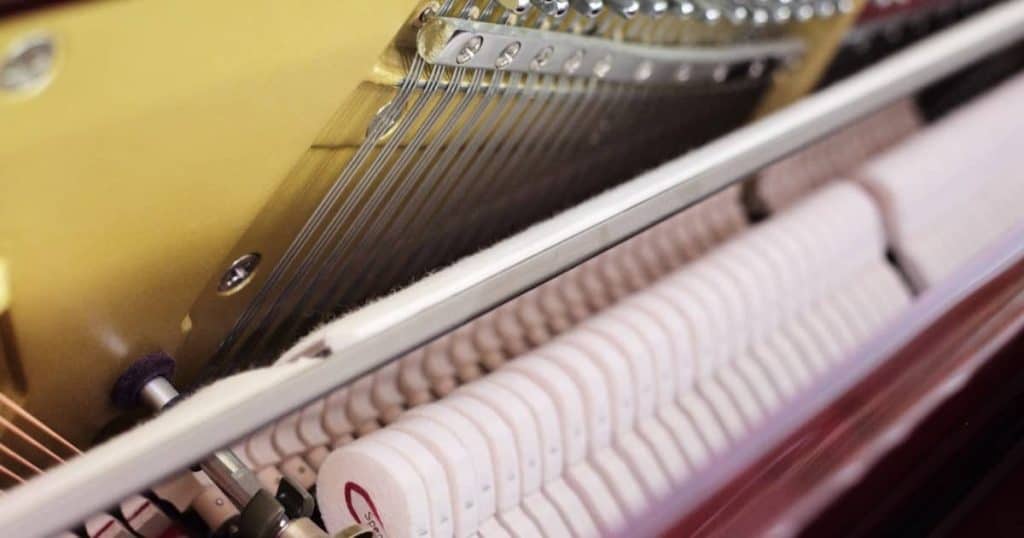
Whether you’ve purchased a new or second-hand piano, you must regularly maintain and tune it. No matter the quality, age or how often you play it, pianos always fall out of tune over time. In this blog, we run through the basics of piano tuning and maintenance so that you understand how to take care of your instrument.
Why Does A Piano Need Tuning?
Piano tuning helps you to keep your piano in better condition for longer. The sound of a piano lies in its intricate system of strings, hammers, and keys. Due to various factors such as changes in humidity, temperature, and regular use, these components gradually shift out of alignment. Piano strings are strung under immense tension which also keeps certain elements of the piano in place such as the shape/crown of the soundboard. If the string tension is not upheld over time the soundboard can flatten which can negatively affect the sound and tone of the piano.
Even if the piano is not played, the strings will gradually stretch and fall out of tune. It may not be noticeable at first, but after a long period of time, you’ll begin to notice your piano notes sounding off-key or out of tune as the pitch has dropped. While tuning is a very important element of piano maintenance, it is only just part of looking after a piano. Regulation (the adjustment of the action) and voicing (the shaping and care of hammers) are also vital parts of properly caring for a piano.
What Causes a Piano to be Out of Tune?
There are various factors that cause a piano to go out of tune. Humidity fluctuations are a common culprit as they cause the wooden and felt components of the piano to expand or contract. These changes in the wood affect the string tension and ultimately the pitch. Likewise, temperature changes can also impact the piano’s tuning stability. In Perth, it’s common for pianos to drop flat in summer as the heat evaporates the moisture from the soundboard. The humidity can also affect the tone of the piano from season to season.
Regular playing causes the piano’s felt hammers to wear. This means the hammers will need to be voiced to maintain a good and even tone. The voicing of a piano is done initially in the factory, during our extensive preparation and setup in-store (to make sure the piano is even) and can be done to suit the requirements of the player and room. Over time the felt on the hammers is compacted and the tone of notes that are played more than others becomes uneven and brighter, a good technician can even out the tone by voicing the hammers in various ways. If a piano is not played for a long time the felt on the hammers can become brittle and sound too bright, when the felt is too brittle it can be harder and potentially not possible for a technician to work on. Even if the piano is not played, the tight tension of the strings will cause them to stretch and fall out of tune. The settling period of 2-4 months after a piano has been moved also causes the piano’s frame and strings to stretch.
How Often Do You Need to Tune a Piano?
The frequency of piano tuning depends on several variables, including climate conditions, usage, and the piano’s age and quality. It’s recommended to tune and maintain your piano at least once or twice a year to preserve its tonal integrity and to keep the instrument at the correct pitch (especially if you are playing with other instrumentalists). However, more frequent tuning may be necessary in regions with extreme climate variations or for heavily used pianos. If your piano is brand new or has recently been relocated, we recommend tuning the piano twice a year for the first two years. This will help the piano to acclimatise to its new environment.

